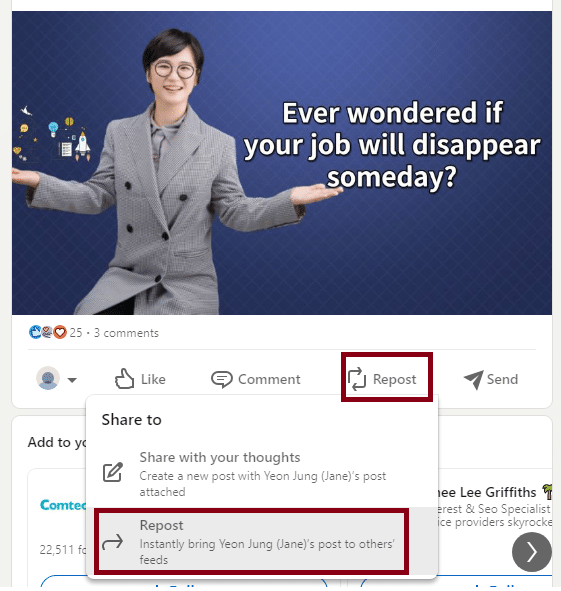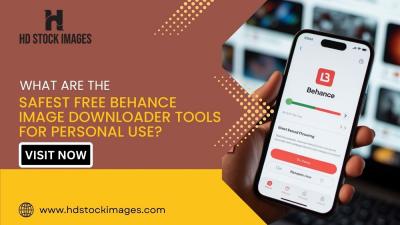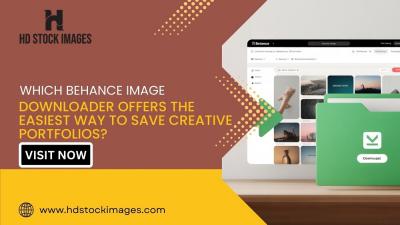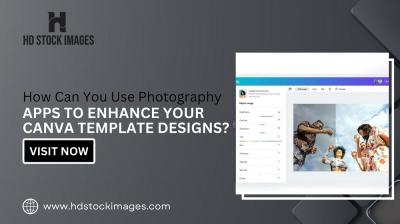LinkedIn is more than just a digital resume; it’s a powerful platform for sharing insights, networking, and showcasing your expertise. Posting on LinkedIn can help you connect with industry professionals, attract potential employers, and even generate leads for your business. But how do you make your posts stand out in a sea of content? In this guide, we’ll explore the art of crafting compelling posts that resonate with your network.
Understanding Your Audience

Before hitting that “post” button, it’s crucial to grasp who your audience is. Understanding your audience not only shapes the content you create but also influences the tone and style of your message. Here’s how to effectively engage with your LinkedIn followers:
- Identify Your Target Audience: Think about the professionals you want to reach. Are they recruiters, industry peers, or potential clients? Knowing this helps tailor your message.
- Analyze Their Interests: What topics do they engage with? Browse through their profiles and see the posts they like or share. This gives insight into their preferences.
- Consider Their Challenges: What problems do they face in their work? Posts that offer solutions or insights into overcoming industry challenges often attract more attention.
- Engagement Patterns: Observe how your audience interacts with content. Do they prefer short updates or long-form articles? Are they more responsive to visuals or text-heavy posts?
Creating content that speaks to your audience’s needs not only fosters engagement but also builds a community around your professional brand. Remember, the more you understand them, the better your posts will perform!
Also Read This: Can You Cancel LinkedIn Premium After the Free Trial? A Complete Guide
Choosing the Right Type of Content

When it comes to crafting a LinkedIn post, the type of content you choose is crucial. LinkedIn is a professional network, so your content should reflect that while also engaging your audience. Here are some popular types of content that tend to resonate well:
- Industry Insights: Share your thoughts on recent trends or news in your field. This positions you as a thought leader.
- Personal Stories: Relatable stories about your career journey can help humanize you and engage your audience.
- Tips and Advice: Offering actionable tips related to your expertise can provide value and encourage shares.
- Visual Content: Posts with images or videos tend to grab attention. Consider using infographics or short clips to enhance your message.
- Polls and Questions: Engaging your network with questions or polls can spark conversations and increase interaction.
Remember to align your content with your professional brand. The key is to not just inform but also to engage and inspire your audience. Tailor your posts to reflect your unique voice while remaining appropriate for the LinkedIn platform.
Also Read This: How to Find and Manage Saved Jobs and Posts on LinkedIn
Crafting Your Post
Once you've decided on the type of content, it's time to craft your post. Here are some effective tips to ensure your post stands out:
- Start with a Hook: Grab attention in the first line. A strong opening can be a question, a bold statement, or an interesting fact.
- Be Concise: While you may have a lot to say, keep your language clear and to the point. Aim for a length of 150-300 words.
- Use Formatting: Break your text into paragraphs, use bullet points, and bold key phrases to enhance readability.
- Include a Call to Action: Encourage your readers to share their thoughts, comment, or even visit your website for more information.
- Hashtags: Use relevant hashtags at the end of your post to increase visibility. But don’t overdo it—3 to 5 hashtags are ideal.
Finally, proofread your post before hitting “publish.” A well-crafted post not only reflects your professionalism but also ensures that your message is communicated effectively.
Also Read This: How to Ask for a Recommendation on LinkedIn? Crafting the Perfect Request for Recommendations
5. Adding Visuals and Links
When it comes to making your LinkedIn post stand out, visuals and links are your best friends. Think about it: a well-placed image or video can grab attention faster than text alone. So, how do you effectively incorporate these elements?
- Choose Relevant Images: Pick images that relate to the content of your post. For instance, if you're sharing an article about digital marketing trends, an infographic that highlights key statistics can enhance your message.
- Use Videos: Short videos can be incredibly engaging. Consider creating a quick clip summarizing your post or sharing a personal anecdote related to the topic. The more authentic, the better!
- Include Links: Don’t shy away from linking to articles, blogs, or resources that support your message. This adds value for your readers. Just be sure to use a link shortener if your link is lengthy; it keeps your post clean and tidy.
Remember, LinkedIn posts that include visuals are known to receive more engagement. So, take a moment to ensure your post is visually appealing and informative!
Also Read This: How to Add Organizations to Your LinkedIn Profile for Greater Impact
6. Optimizing Your Post for Engagement
Engagement is key to getting your voice heard on LinkedIn. To optimize your post, consider these strategies:
- Write a Catchy Headline: Your post's headline should be enticing. It’s the first thing people see, so make it interesting! For example, instead of “Tips for Networking,” try “Unlocking Networking Secrets: 5 Tips You Wish You Knew!”
- Ask Questions: Incorporating questions invites your audience to participate. For example, “What strategies have you found effective in your career?” This can spark conversations and comments.
- Use Hashtags Wisely: Including relevant hashtags increases visibility. Aim for 3-5 hashtags that relate to your post. Examples include #Leadership, #CareerDevelopment, and #Networking.
- Engage with Comments: Once your post is live, keep the conversation going by responding to comments. Acknowledging your audience shows you value their input.
By applying these tips, you can make your LinkedIn posts not just read, but spark discussions and connections!
Curl error: Operation timed out after 50001 milliseconds with 12028 bytes received
Also Read This: How to See Your Likes on LinkedIn and Track Your Engagement
7. Scheduling and Timing Your Post
When it comes to posting on LinkedIn, timing can make all the difference. You want to ensure that your content reaches your audience when they are most active. But how do you determine the best time to post? Here are some tips:
- Know Your Audience: Understanding your audience’s habits is crucial. Are they professionals who check LinkedIn during lunch hours, or are they more active in the early morning? Tailor your posting times based on their behavior.
- Optimal Days: Research suggests that midweek days, especially Tuesday, Wednesday, and Thursday, tend to see higher engagement rates. Fridays are often slower, as many professionals wind down for the weekend.
- Use Scheduling Tools: Tools like Buffer or Hootsuite allow you to schedule your posts for optimal times. This means you can craft your content in advance and let the tool handle the timing.
- Experiment and Monitor: Don’t hesitate to experiment with different posting times. Monitor your engagement metrics to find what works best for your specific audience.
By strategically scheduling your posts and being mindful of timing, you can significantly increase your visibility and engagement rates on LinkedIn.
Also Read This: How to Download a Video from LinkedIn
8. Analyzing Post Performance
Once you've shared your post, the work isn't over! Analyzing its performance is key to understanding what resonates with your audience. Here’s how to effectively analyze your LinkedIn post performance:
- Engagement Metrics: Keep an eye on likes, comments, and shares. High engagement indicates that your content is hitting the mark.
- Views and Clicks: Check how many people viewed your post and clicked on any links. This tells you if your content is attracting attention and driving traffic.
- Demographics: LinkedIn provides insights into the demographics of your audience. Pay attention to who is interacting with your posts—are they from your industry or in specific roles?
- Feedback and Comments: Read through comments to identify feedback. Engaging with users who comment can also help deepen relationships and show that you value their input.
Using these insights, you can refine your content strategy, making future posts even more effective. Remember, analyzing performance is about continuous improvement, so be open to learning and adapting!
How to Make a Post on LinkedIn
Creating an impactful post on LinkedIn can elevate your professional presence and engage your network effectively. Here’s a step-by-step guide to help you craft the perfect post:
1. Define Your Purpose: Before you start typing, clarify the goal of your post. Are you sharing insights, promoting an event, or asking for opinions? This helps you stay focused.
2. Choose the Right Format: LinkedIn supports various formats:
- Text Posts: Great for sharing thoughts or updates.
- Image Posts: Use visuals to grab attention. Infographics work well here.
- Video Posts: Engaging and effective for storytelling.
- Articles: For detailed insights or industry analysis.
3. Crafting Your Message: Keep your message concise and engaging. Start with a hook to grab attention, followed by the main content. Ensure your tone is professional yet approachable.
4. Utilizing Hashtags: Incorporate relevant hashtags to increase visibility. Aim for 3-5 hashtags that relate to your content or industry.
5. Engaging with Your Audience: Encourage comments by asking questions. Respond to comments to foster engagement and build relationships.
6. Timing Your Post: Post during peak hours when your target audience is most active—typically weekdays between 10 am and 2 pm.
7. Analyzing Performance: After posting, monitor engagement metrics such as likes, shares, and comments to understand what resonates with your audience.
Conclusion: Best Practices for Future Posts
To enhance your LinkedIn presence, remember to maintain consistency in posting, stay updated on industry trends, and continuously engage with your audience. This approach will not only strengthen your professional network but also position you as a thought leader in your field.
 admin
admin








